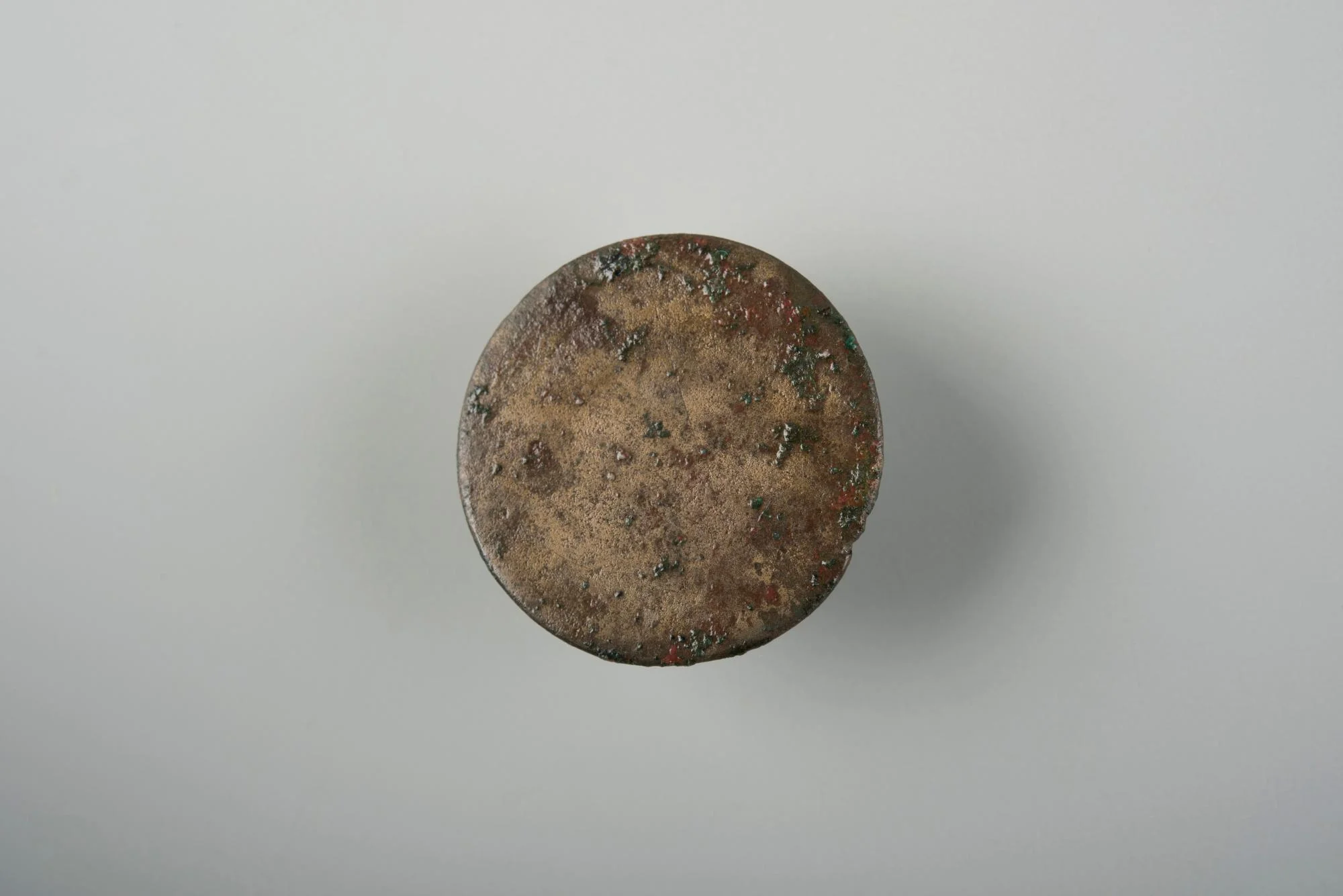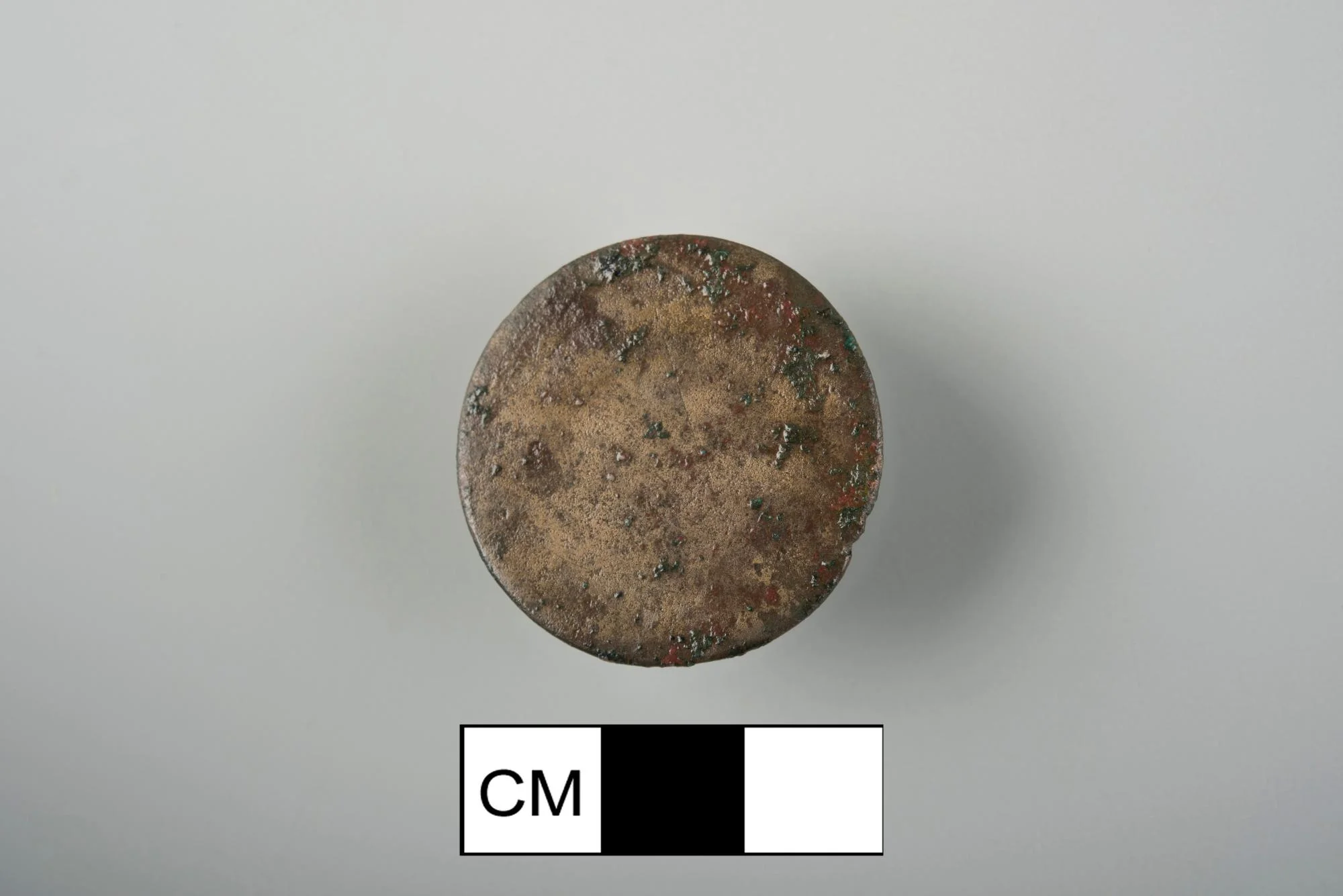Notes
This is a one piece metal button, which archaeologists often refer to as “flat disc” buttons. One piece buttons were often made of copper alloys. This particular example is cast tombac as denoted by the “grey” coloration seen below the corrosion on the button face. Tombac is an alloy of copper and zinc, which originally would have had a pale yellow-white color. The shank of this button was a length of copper alloy wire which was inserted into the mold as the button was cast in a style called cast in boss. Buttons such as these were produced in the second half of the eighteenth century.
In the eighteenth century, buttons came in a variety of shapes and sizes. Sometimes this variation can be used to identify which articles of clothing a button may have been used in the past. The diameter of this button indicates it was likely for use on a coat.
Object Type
Has it Been Conserved?
Yes
Where Was It Found?
Project Site: House for Families [more details]
Material
Manufacturing Technology
Form
Shape
Completeness
Date
1760-1800
Country of Origin
Dimensions
27.26mm x 4.95mm x 27.26mm (W x H x L)
Illustration shows object in comparison to the size of a quarter
Weight
7.3 gram(s)
Object Number
1800311
DAACS Number
1800311
Project: House for Families
The structure identified as the “House for Families” on the 1787 Vaughan plan likely housed the majority of the enslaved population living at the Mansion House Farm for much of the second half of the eighteenth century. The building was in existence from circa 1760 until it was demolished in late 1792 or early 1793. The archaeological evidence for the structure consisted of a brick-lined storage cellar (44FX762/40-47) measuring roughly six feet by six feet. Historically the cellar served as a handy trash receptacle once it ceased to be used for its original storage function, and through extensive excavation has yielded an extremely rich assemblage of household refuse. The analysis of these remains offers the opportunity to study important aspects of the daily lives of Mount Vernon's enslaved community.
See All Objects From this Dig


 Buttons
Buttons